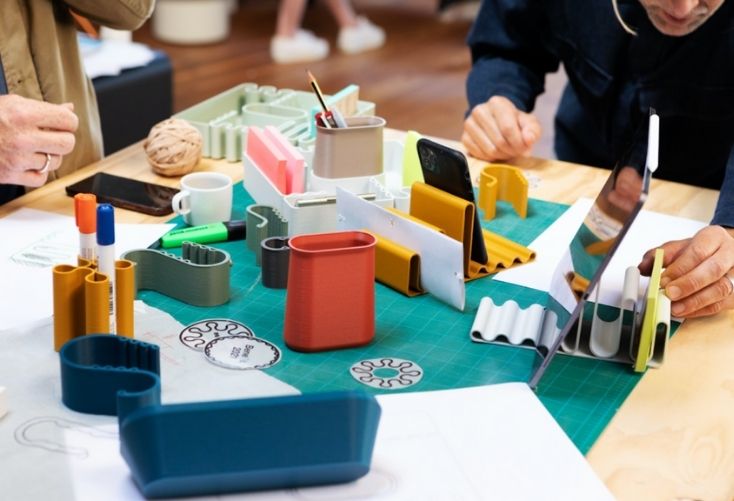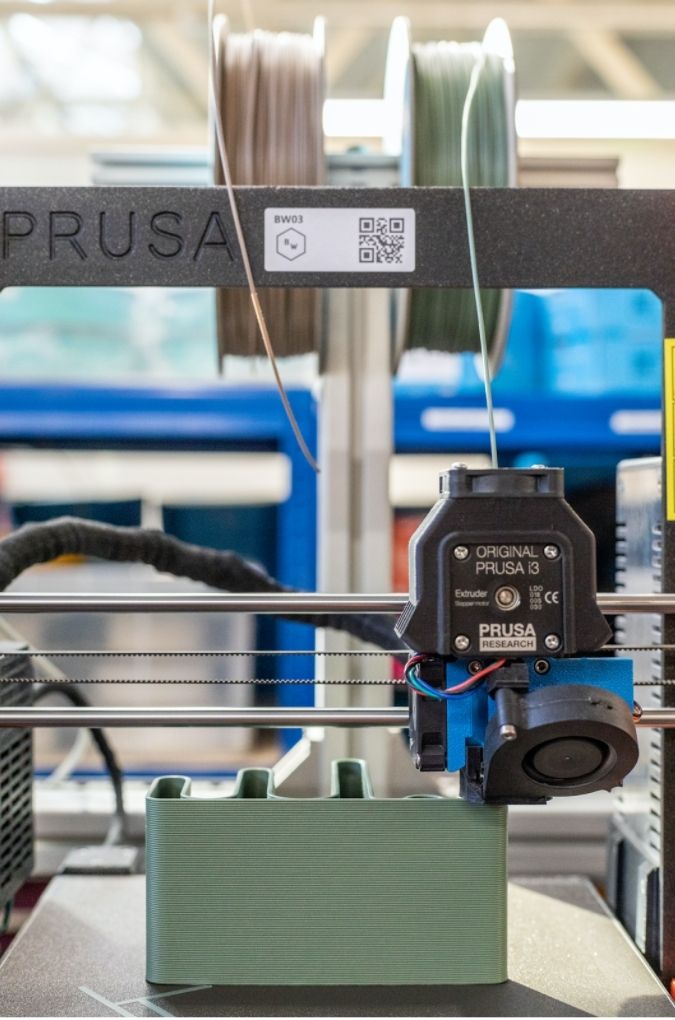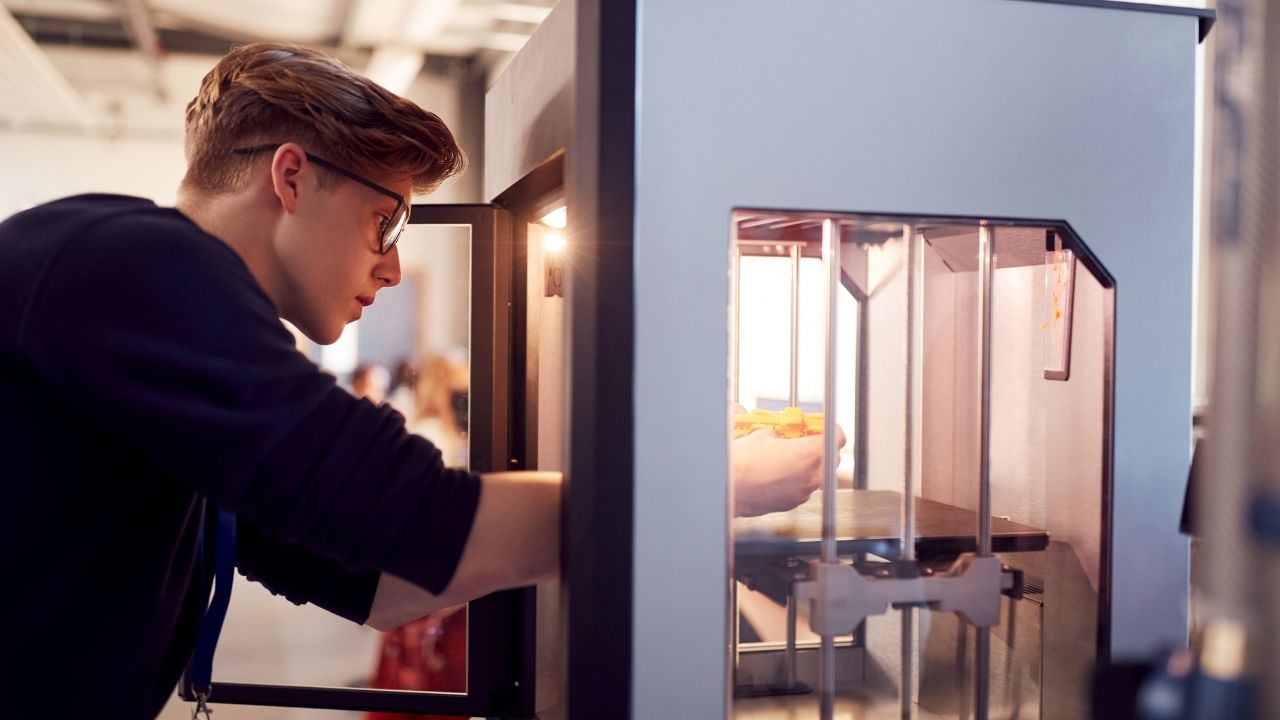- Bene, a 200-year-old workspace furniture brand based in Austria, is leading the way in sustainable production.
- The company is focusing on minimising carbon emissions by 3D printing products using already-used biodegradable materials.
- Allwork.Space spoke to Michael Fried, Bene’s CEO, to learn more about their circular production techniques and the future of sustainable workspace design.
It’s not often you come across a company in the workspace sector that’s been operating for over 20 years, let alone 200. But Bene has.
Established by a carpenter in 1790, a year after the French Revolution began, Bene is the world’s longest-running office furniture brand.
But don’t let its longevity fool you into thinking it’s stuck in the past.
In the words of Michael Fried, Bene’s CEO, “we’re a company with a lot of tradition but we’re not a traditional company. Our vision for decades has been to become, be and stay the worldwide reference for innovative working, and this is what we still strive for.”
Bene’s headquarters are situated in what big city dwellers might describe as the ‘middle of nowhere’, in Waidhofen, Austria – halfway between Salzberg and Vienna.
The firm’s growth started to really accelerate in the 20th century.
“When offices started to become more industrialised, we were the first ones coming up with some solid dedicated office furniture,” says Fried.
At the beginning of the 21st century Bene launched its Parcs furniture collection to cater for the emerging coworking sector. The collection is still going strong today.
Now, Bene is turning its attention to sustainability.
“If you see where we’re living and working in the middle of the forest, and the raw material that we’re working with, you know that sustainability has to be part of our story. Our timber in Austria is a sustainable product because our reforesting is a benchmark.”
Nearly 50% of Austria is forested and the country is a leader in reforestation, as demonstrated through initiatives such as The Austrian Forest Dialogue.
“But when you produce things you always have some kind of carbon footprint,” admits Fried.
“We’re minimising this and taking the next step towards sustainable production by 3D printing products using already-used biodegradable materials.”
In November 2021 Bene launched bFRIENDS – its first, 3D-printed, circular production accessories collection made from 100% recycled post-consumer bioplastic.
The collection was designed in collaboration with Pearson Lloyd, Bene’s long-standing design partners, and manufactured by the London-based eco startup, Batch.Works.

The recycled plastic is sourced by Reflow, a social enterprise specialising in recycling the bioplastics used in products such as food packaging, for the purposes of 3D printing.
“It’s a collection of desktop accessories comprising pen holders, trays, mobile device holders [etc.] made from discarded food packaging,” says Fried.
21 products are available in ten colours, however because the 3D printing process is so fast and flexible, customers can request custom colours when ordering in bulk.

3D printing works by building up the products layer by layer in a single continuous line, as opposed to cutting away from a larger material block or through injection moulding, both of which tend to generate more waste material.
Batch.Works’ 3D printing facilities are wind powered, so production is energy-efficient, requiring just 1.35 KW for every kilogram of printed product.
Circular economy is the key concept behind the new collection.
According to Zero Waste Scotland, “a circular economy is achieved by designing products smartly with their whole life cycle in mind, re-using and repairing to extend their useful life, and then when their life is deemed over, remanufacturing to create new products from old.”
In the spirit of a circular economy, customers are encouraged to recycle their bFRIENDS products when they no longer have a need for them. Any unwanted accessories can be returned to Bene to be recycled into new products.
Interestingly, bFRIENDS isn’t Bene’s first foray into 3D printing, per se.
In 2016 it supplied the furniture for the world’s first 3D printed office. Situated in Dubai, the concrete building was printed with a 6×46 metre 3D printer.
The key question is: is Bene planning to scale up the project and start printing 3D furniture?
It’s a possibility Fried’s certainly interested in.
“Of course! This could be the future. The bFRIENDS collection is not a trial; it’s clearly where we’re going. In the field of production, we’ll still have to see. As we’re a premium provider, we’re not making compromises on the quality.”
Fried wants to avoid ‘greenwashing’, which is when brands exaggerate their environmental credentials to mislead eco-conscious consumers. Take bamboo for instance, a material that Bene uses in some of its product lines.
Although bamboo is a sustainable crop in the sense that it’s fast-growing, requires no fertiliser and self-regenerates from its own roots, Fried says that we can’t gloss over the carbon emissions involved in transporting the raw material from countries like China.
“We want to make a step towards real sustainable efforts and so this [3D printing] is what we’re focusing on.”
In the short-term, Bene is going to be focusing on expanding its accessories product line.The team is keeping an eye on which colours are proving popular, and will continue to develop the physical language of the collection.
Fried also hopes that, in the near future, 3D printing facilities will become more widespread, enabling designers to leverage a distributed network of local manufacturing hubs.
The availability of 3D printing will significantly reduce shipping costs and minimise carbon emissions associated with the transportation of materials and goods.
“Cutting shipping distances for both raw materials and finished products, and shortening supply chains and lead times, is something that we all have to strive for.
“The 3D printers can be standing anywhere. We’re going to have some in our main markets here in Austria, Germany and France. This will be the future of our industry in the long-term.”


 Dr. Gleb Tsipursky – The Office Whisperer
Dr. Gleb Tsipursky – The Office Whisperer Nirit Cohen – WorkFutures
Nirit Cohen – WorkFutures Angela Howard – Culture Expert
Angela Howard – Culture Expert Drew Jones – Design & Innovation
Drew Jones – Design & Innovation Jonathan Price – CRE & Flex Expert
Jonathan Price – CRE & Flex Expert













